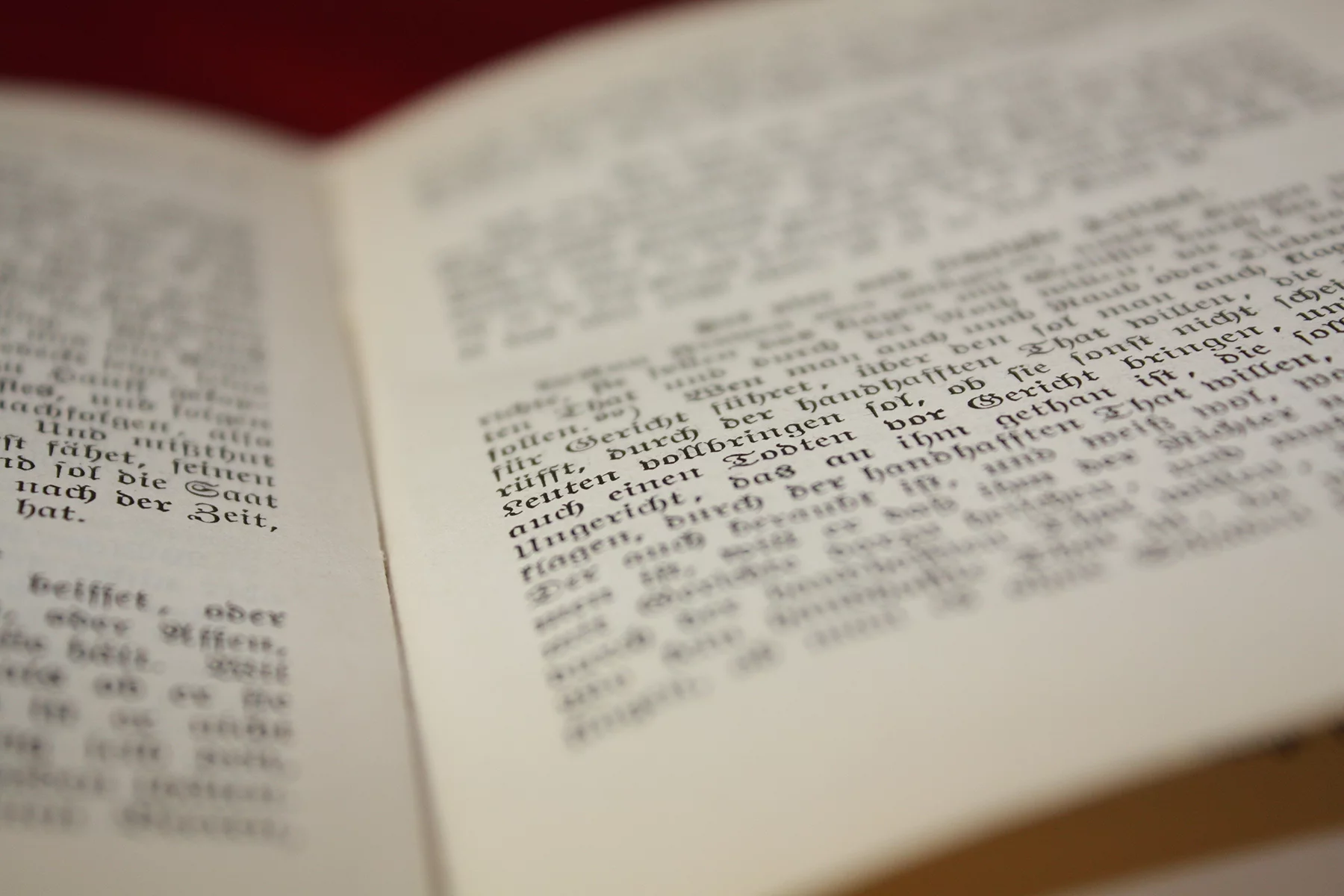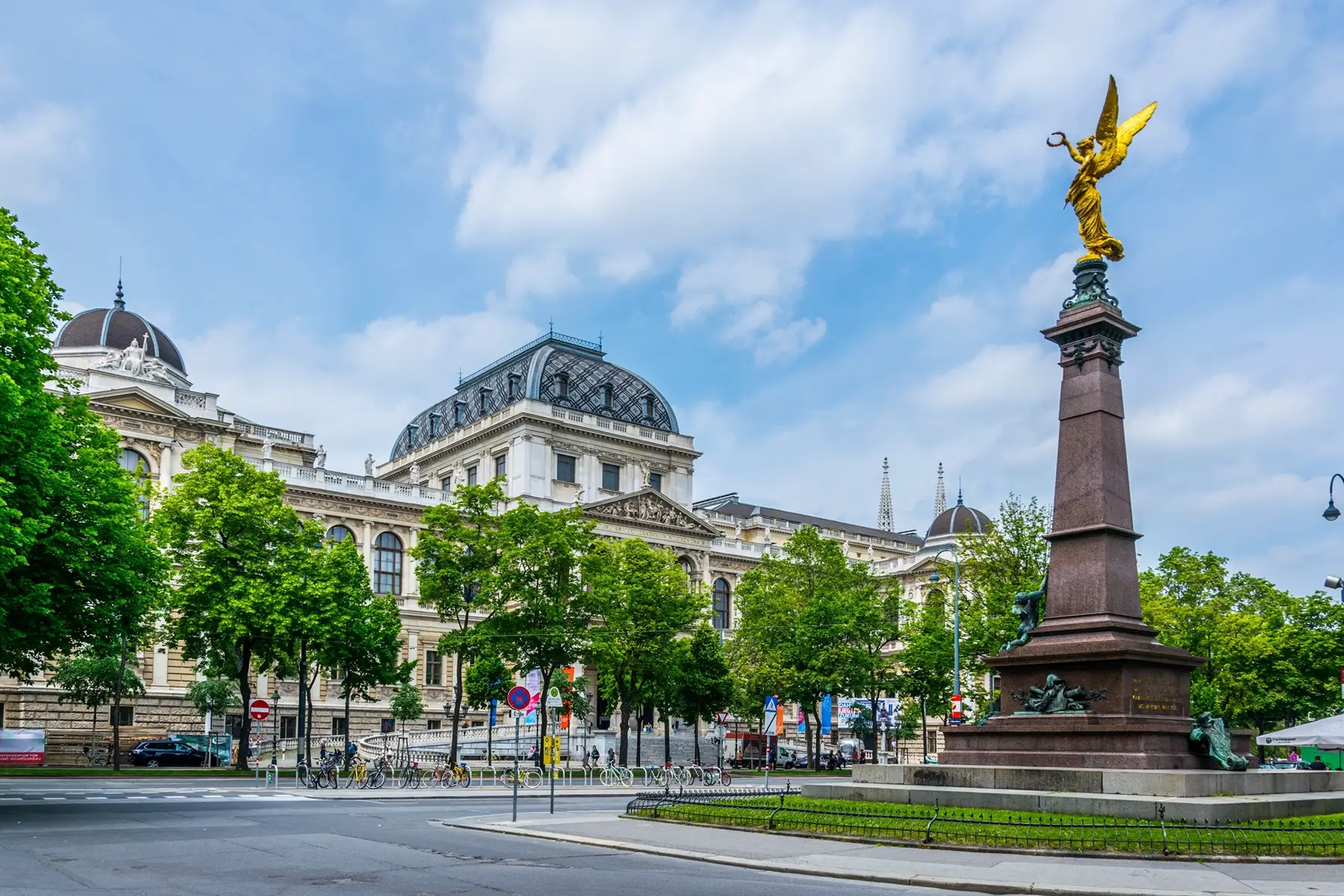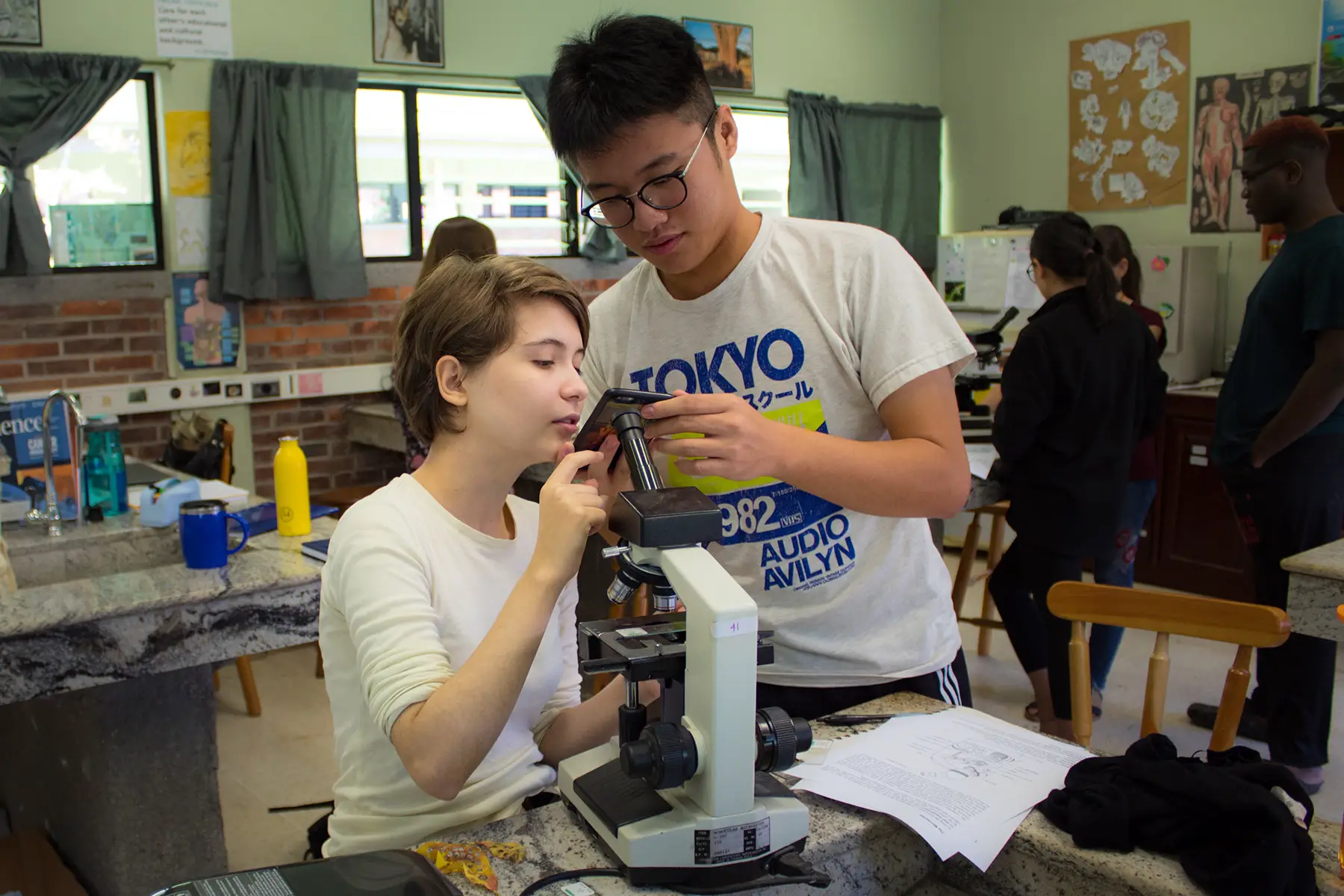Choosing a secondary school for your child in Austria can be a stressful experience, especially if you are faced with a language barrier. After all, the school that they end up attending will set them up for their future, so it’s important to make the right decision. For example, they might choose to attend a trade school to find a job in a specific field, a local state school to prepare them for a local university, or a private international school so they can graduate with a qualification that is recognized in their home country. Indeed, there are plenty of options when it comes to studying in Austria.
To help you navigate secondary schools in Austria, this guide explains the following:
The secondary education system in Austria
From the age of 10 to 15, children must attend a junior high or secondary school in Austria. However, there are many types of secondary schools, so children – and parents – have to make decisions early on. For example, most towns and cities have regular academic schools called Hauptschule or Kooperative Mittelschule.

However, in certain areas, such as Vienna, children may first attend a new middle school (Neue Mittelschule) or German-style Gymnasium (allgemeinbildende höhere Schule). As with primary schools, secondary schools in Austria can be either public or private.
State/public secondary schools in Austria
Austria has around 1,200 public secondary schools and 72 private secondary schools that receive government support. In addition, there are 270 public academic high schools (and 81 private) as well as 335 public and 158 private vocational institutions. In 2020–2021, there were 216,036 secondary students in secondary schools and 116,759 in vocational schools.
Secondary schools in Austria are split across two levels. As such, students will usually attend a general secondary school, which covers Years 5 to 7. After that, they can choose a general secondary school (Mittelschule) or an academic secondary school (AHS-Unterstufe) which might be specialized in grammar (Gymanisum), science (Realgymnasium), or economics (Wirtschaftskundlisches Realgynamiasum). These schools cover Years 8 to 12, but students can opt to transfer to a vocational/trade school from Year 9.
Because the government subsidizes them, state secondary schools are free to attend. However, there are usually additional costs involved for materials or activities. Nevertheless, all public schools in Austria offer a good quality education. This is because the country invests heavily in its schooling. For example, in 2019, Austria spent US$15,477 per student at the secondary level, which was far above the OECD average of US$10,010.
As with all state schools in Austria, German is the language of instruction in local public schools. However, most schools offer remedial classes and separate tracks for students who are still learning the language.
The curriculum in state secondary schools in Austria
In Austria, secondary school is compulsory up to the age of 15 but most students continue up to age 18. As such, all students attend one form of schooling. In the 2017/2018 school year, there were 207,898 students in general and new secondary schools because more students (119,591) were choosing academic schools. An additional 143,544 pupils attended technical and vocational colleges.

Secondary schools in Austria operate as a four-year system. During this time, there is a strong focus on individual education and career guidance. This is because, in Austria, schools provide the initial training for work and a career. That said, the core secondary curriculum in Austria is much the same as it is in other countries. Therefore, students take classes in languages, maths, and science.
As well as this, they take classes that allow them to pursue particular interests and training, such as musical, creative, sporting, and practical skills. In lower secondary schools, students can also choose from specializations. For example, they can opt to focus on linguistics and humanities, science and maths, economics, or music and arts.
Similar to primary schools, the school year at secondary schools runs from September to June and is divided into two semesters with various holidays dotted throughout the year; especially for religious days.
The pros and cons of state schools in Austria
One of the biggest benefits of state secondary schools in Austria is that they are free and provide a good education. Additionally, expat children will likely learn more languages, as they will need to pick up German and a second language. These schools also encourage an individualized, career-focused education which can be useful for students who know what they want to do. State schools can also be a great opportunity for cultural immersion.

Of course, state secondary schools have drawbacks, too. For example, the curricula and qualifications might not be the same as in your home country. Furthermore, some schools might be under-resourced, or might not have enough teachers to provide individual attention.
Applying to secondary state schools in Austria
The process of applying to state secondary schools in Austria differs depending on what type of school you want to go to. In general, you will choose a school in your area and apply directly to it.
When applying, you will need to submit certain documents, such as a photo, passport copy, previous grades, and teacher recommendations. Typically, you will then need to attend an in-person interview. There is often a waitlist for the more popular public secondary schools. As such, you should plan to apply to your chosen school early on.
On acceptance at a school, you will need to complete the enrollment process. At state schools, this is usually quite straightforward but involves a lot of paperwork.
Private secondary schools in Austria
Despite the fact that there are over 600 private schools in Austria, only about 10% of students attend one. There are several different types of private schools, some of which are outlined below. However, among expats, international schools tend to be the most popular.
Religious schools
Due to Austria’s devout religious background, most private schools (50 to 54%) are denominational. Furthermore, most of these have direct links to the Roman Catholic Church. Notably, these schools have a strong reputation for discipline. Although these secondary schools include a spiritual aspect in their curricula, they often issue standard qualifications such as the International Baccalaureate (IB).
Montessori schools
The Montessori education system is popular around the world. As such, Austria also has several private schools that follow these principles. Because the system discourages standardization and testing, children can follow a very creative style of learning that encourages independence. That said, these experiences still focus on real-life experiences. However, only several schools go all the way up to the secondary level. This includes the Montessori International School in Perchtoldsdorf.
Waldorf schools
Waldorf secondary schools have public-law status in Austria. In practice, this means that they are largely independent institutions that are run by a board. Although Waldorf schools follow a similar philosophy as Montessori schools, they tend to focus more on creativity, imagination, and fantasy. Therefore, they provide a holistic education that includes intellectual and artistic pursuits. The Rudolf Steiner School in Salzburg is one of many campuses that offers both primary and secondary education in Austria.
The cost of independent secondary schools
The cost of private secondary schools in Austria is similar to that of international schools. For instance, fees can go up to over €25,000 a year for secondary school. Boarding schools are also more expensive, ranging from €30,000 to €50,000 per year. Parents will also have to pay one-off fees for admission, registration, and application, as well as activities and meals.
International schools in Austria
For expats in Austria, international schools are a popular choice for education. This is because they offer a great education, a multicultural environment, and plenty of non-academic opportunities. There are many British, French, and American international schools in Austria. Therefore, expat parents can enable their children to follow the same kind of secondary curriculum that they would follow at home.

The qualifications attained at international schools in Austria also match these countries. For example, British schools may offer GCSEs and A-Levels while American schools may offer SATs and AP programs. Of course, the International Baccalaureate (IB) is the gold standard for international school qualifications. As a result, most of these schools offer this, too.
Similar to private schools, international secondary schools are very expensive. In fact, costs can go up to €40,000 a year while international boarding school fees can be as much as €60,000. As well as tuition fees, parents will have to pay a series of other costs.
Some of these are laid out below:
- Admission – €5,000
- Application – €5,000
- Capital – €4,000
- Deposit – €500
- Meals – vary depending on the child’s choices
- Activities – vary depending on the child’s choices
The pros and cons of private and international schools in Austria
There are many advantages to private and international secondary schools in Austria. Firstly, they almost always offer a higher level of education than state schools. Secondly, children are exposed to a multicultural environment where they can enjoy better facilities, equipment, and extra-curricular activities. And finally, students usually graduate with a globally recognized qualification and, if they attend an international school, they can follow the same curriculum as their home country.

Conversely, the main drawback of private schools in Austria is the cost. Additionally, many children in these schools don’t integrate as readily into the local community.
Graduating in Austria
In secondary schools in Austria, standard assessments are given in the seventh and eighth years. These generally involve different aspects, including class involvement, oral and written exams, and practical performance. In addition, students generally have various tests each semester. Finally, at the end of their nine years of compulsory education, students sit a matriculation exam. This includes three written and three oral tests or four written and two oral tests. As long as they pass this, they will officially finish school and be ready for tertiary education.
The International Baccalaureate (IB) in Austria
The International Baccalaureate (IB) first became available in a secondary school in Austria in 1977. Nowadays, though, 17 schools in the country offer the IB Diploma program. As with all IB Diploma programs, students have to take six courses; usually three at a higher level and three at a standard level. However, they must split these across different disciplines, such as science, maths, humanities, and languages.
Additionally, students must complete an Extended Essay on a topic of their choice, take a Theory of Knowledge course, and complete 50 hours of CAS (community, action, and service activities).
Trade schools in Austria
In Austria, students from the age of 14 can opt to attend a polytechnic (Polytechnische Schule) for vocational training and apprenticeships. There are many different types of vocational upper secondary schools in the country. For example, many students attend a part-time vocational school and apprenticeship (Berufsschule). However, some might switch to a School for Intermediate Vocational Education (BMS). In addition, there are five-year Colleges for Higher Vocational Education (BHS).

To attend these schools, students must pass the eighth or ninth grade. They must also take a diagnostic German test to ensure that their language skills are up to scratch. Furthermore, students will usually have to undergo diagnostic tests for English and maths. If they are lacking, the institutions often create individualized remedial programs.
Trade schools offer training for over 250 types of careers. As such, students can choose from specializations such as Construction, Electrical Engineering, Gastronomy, Commerce, ICT, Textiles, Transporation, and Warehousing. Because the curriculum is so focused, this is a good option for students who know what career path they want to take. BMS and BHS institutions, on the other hand, offer different specialties. These include business, economics, fashion, hospitality, healthcare, and agriculture.
Trade school can take anywhere between two and four years to complete. Even so, there are several options. For example, a student may start at a Berufsschule but finish their course at a BMS.
Useful resources
- Austrian Government Migration Site on Education – a breakdown of Austria’s education system
- Bildungs System – a comprehensive page about the Austrian education system
- European Commission Eurydice – the European Commission site with information about the Austrian education secondary system
- City of Vienna – a page about the Viennese school system







